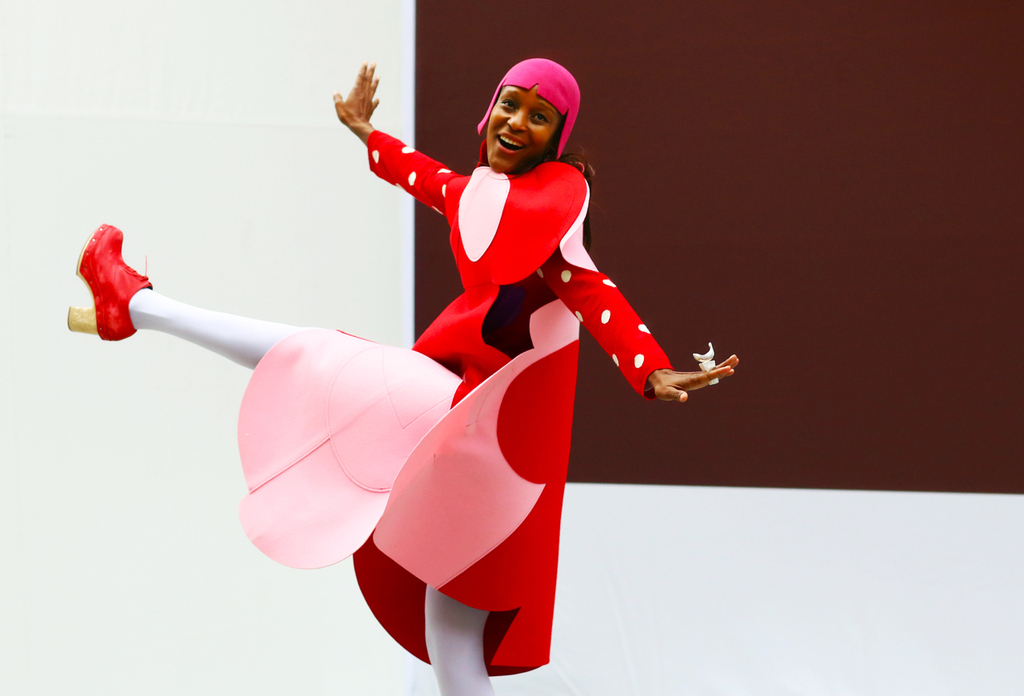
In this series, BuzzFeed Fashion speaks to the industry's most influential players about how they made it in fashion. Below, Street Peeper's Phil Oh, one of the internet's first street-style photographers, shares how he went from photographing famous editors with a basic point-and-shoot camera to shooting for Saks Fifth Avenue.
I never was that interested in fashion growing up. I grew up in Chicago and moved to New York in '98 to go to NYU. I graduated December '01 right after 9/11. I spent about a year and a half after school backpacking around the world on $10 a day — I had studied history, so I wanted to see some of the places I had studied. The job market wasn't great, so I was waiting tables or bartending or running parties; I worked at an internet start-up for about a year. And I lived in a model dorm for like six months as a chaperone; I got free rent. Looking back on it, it was funny, but it was miserable. It was like this endless parade of 18-year-old Russian girls, and all the club promoters would come pick them up and take them to Marquee [the nightclub]. I wrote a book about it with one of the models I lived with, since I figured people would rather read a book cowritten by a model than just by me, and I used the money from that to start Street Peeper.
I never really read fashion magazines. I remember the first time I saw street-style anything was in the Fruits book. Fruits is a really long-running Tokyo street-style magazine that covers Harajuku street style, and it released its first book [in 2001]. But I had no interest or background in fashion, no interest or background in photography. I just thought street-style blogging would be fun and sort of an excuse to travel to London, Paris, or Tokyo. I saw The Sartorialist and Facehunter had just started. What was funny was when I started my blog, I was like, Oh my god, there are already two street-style blogs — will people think it's corny or tacky that I'm starting a third one? Will people think I'm unoriginal? That's why I tried to add something else with the brand search or style search — you can type in "high-waisted" or "Prada" to search the images.

I was doing actual on-the-street street style — people on the street not at fashion week. I spent around 10 hours a week on the blog. I'd spend a weekend, maybe like a Sunday afternoon or one or two weekday afternoons, in Soho or the Lower East Side or Williamsburg. I started with a dinky point-and-shoot [camera]. I didn't care so much about composition or if the images were sharp. I felt like the actual quality of the photography didn't really matter, and that it was much more about the subject and trying to make a pretty image.
I started going to fashion week because I figured I could get a lot of pictures at one time, and it's an excuse to party. But as street style got more popular and advertisers would come try to advertise on my blog, and here and there magazines would start buying my pictures, I thought, Oh shit, this could be something more than just a stupid hobby.
As more and more photographers started showing up to take pictures, I realized I had to upgrade my camera. It's a little embarrassing going up to important editors in Paris and being like, "Can I take your picture?" using this shitty camera. So I started slowly upgrading my camera over the years and slowly figuring out how to use it. I never took a class or anything. It's a lot of trial and error and a lot of practice. Now there are so many photographers at the shows, which I complain about all the time, but one consequence of it is it's made me push myself to work harder and really care about getting an interesting picture.
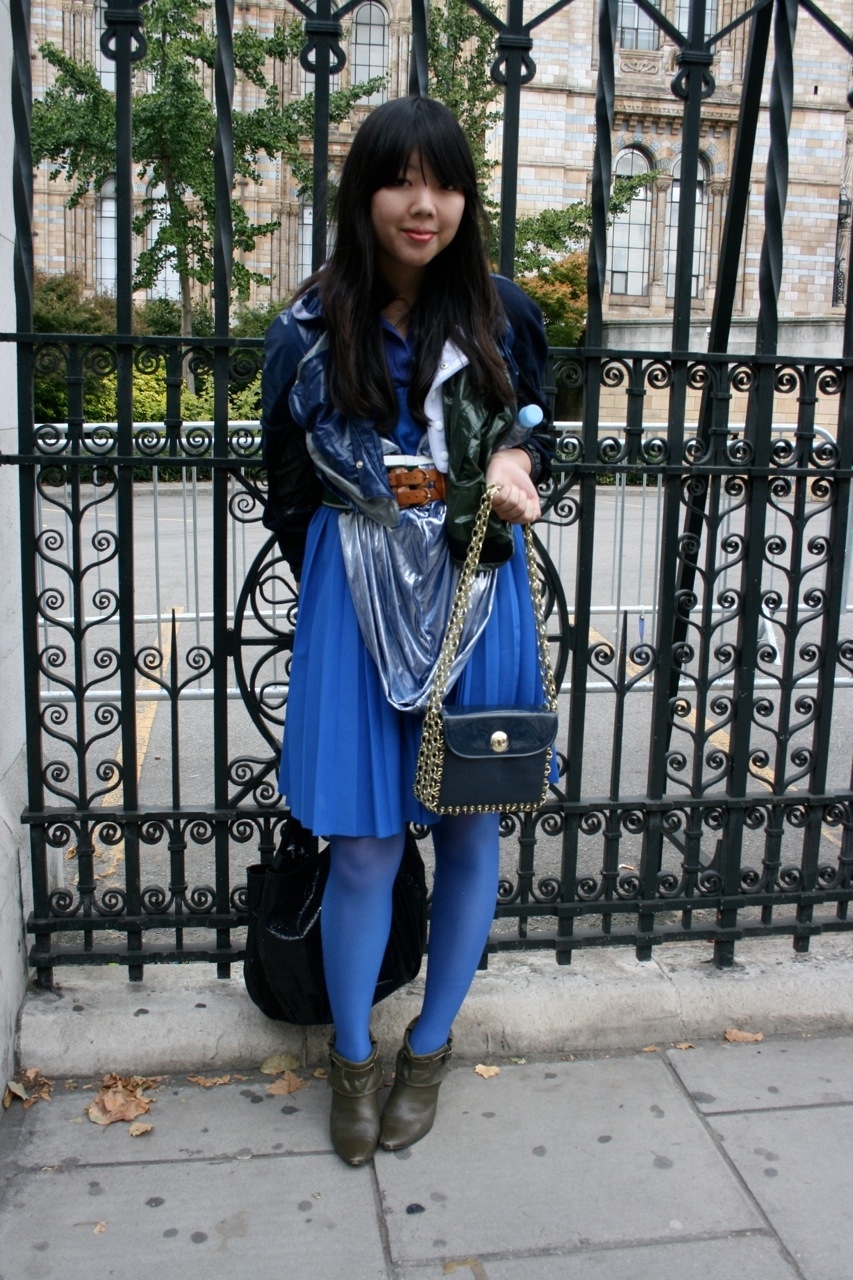
It's so hard to qualify when people ask what you look for — there's never really a formula, which is funny now that every blog has a story about "how to get shot by street-style photographers." [Ed. note: guilty.] When I first started I didn't really have a very developed sense of style. I would just take pictures of something that was eye-catching. If you look at my personal style, I really like color and prints and textures, so I was always really interested in that. But once the focus of street style turned to fashion weeks, editors and models and "it" girls or whatever, of course I started looking for the people that I know will be popular — someone like Anna Dello Russo. But I really love finding sort of unknown girls. It's hard to qualify, though.

Blogging was never easy. For the first few years, the blog really wasn't particularly successful financially. It was enough to pay my rent and my expenses, but I was still living off my book deal. Then one day I got an offer from an ad agency to buy a shitload of ads, and I was really surprised because it was a really big ad buy, and I thought maybe there was a typo — an extra zero. I wasn't sure if that was a real figure until the check came. I had beginner's luck, and I've been chasing that first high ever since. But that was a turning point when I thought this could be a real business. I thought the blog could be really successful or a supplement to a real career.
A few months before Vogue relaunched its website, I got a random email from their photo director. I guess it was sort of like Devil Wears Prada in that I never grew up reading Vogue — not just Vogue, but any fashion magazine. So I wasn't really intimidated. I didn't really think anything of it, I just thought, Oh, another meeting. It'll be nice to have a gig. And I went in and met the photo editor at the time, and I remember the photo he showed me that caught their eye was a picture of Lauren Santo Domingo and Edward Enninful and a couple of models walking through the Tuileries laughing, and they said, "This is what we want — can you do more of this?" And I said, "Sure, why not?" And I've been at Vogue.com since then. It started off as a couple of slideshows per fashion week, and as it became more popular, I started submitting every day during fashion week.
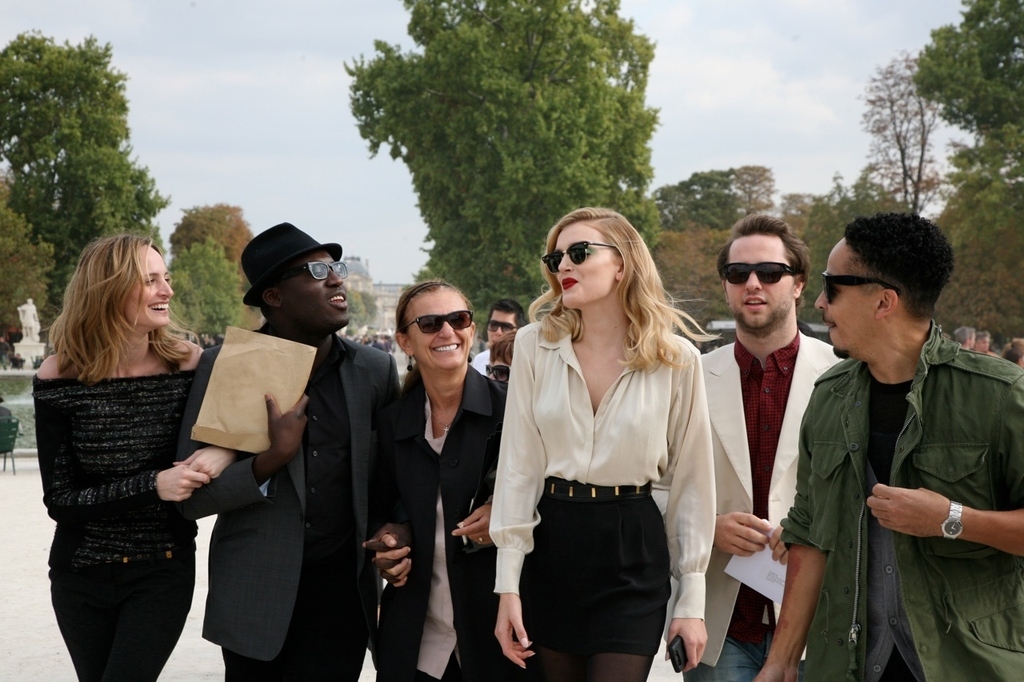
Can it keep going like this? I have no idea. It seems like there's no room for anything else. But there's no barrier to entry to get into street-style photography — you don't need any credentials. You can be a kid or a wire-image photographer. You can show up and start snapping away, and you don't even need to know who or what to shoot. Shooting with that many photographers gets really difficult and really frustrating at times, but there's really no time to even think about it because every day is a new day, every show is a new show.
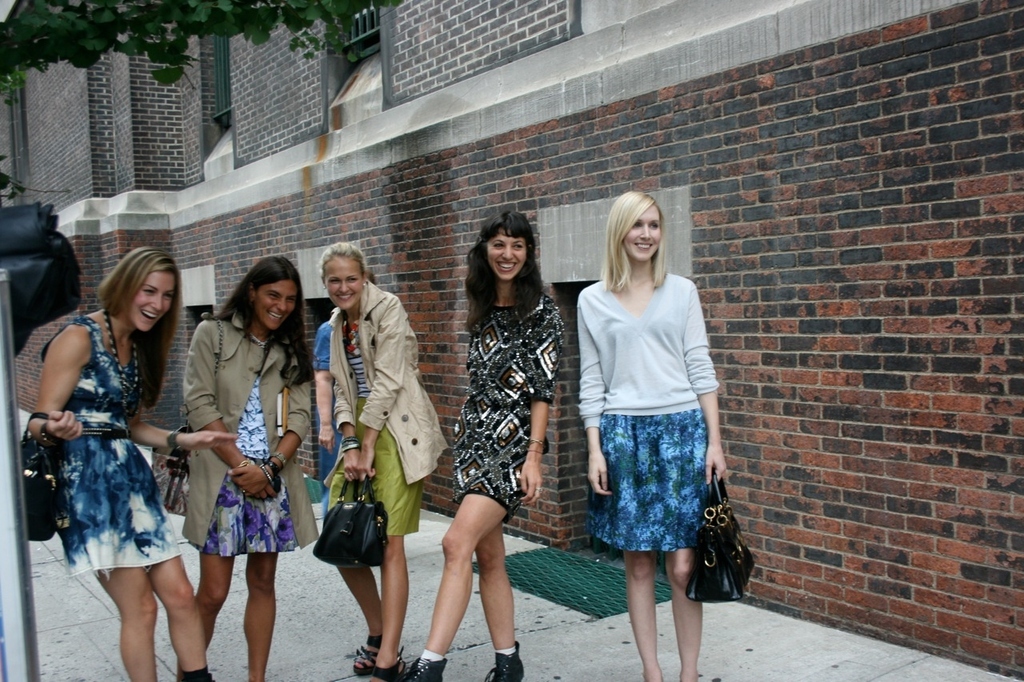
But it's gotten really, really difficult. With the lens I use I have to stand really far back, so I have to hang around waiting for an opening. The number of people hanging out has increased so much that there's just, like, a fatigue of it all — where by the end of the day, the end of the week, the month, the editors, models, and stylists are just tired.
These photographers that show up every season, they don't understand the protocols or etiquette of how we work. Our subjects are people, they're not just robots to use for our personal portfolios. Someone will go up to, like, I don't know, Gloria Baume or someone like that, and say, "Hey, you go over here, stand like this, hold your bag higher," and it's like, she's not a robot model — do you know who you're talking to?
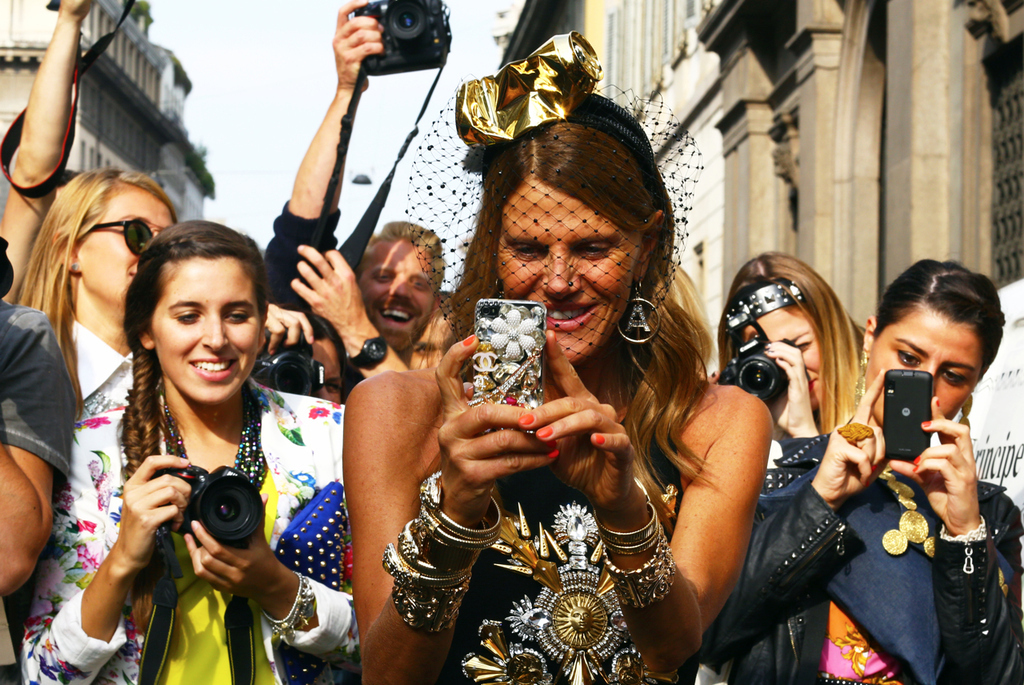
This one editor was always so gracious to all the photographers. Street style helped her career — and she's really talented and had a great eye, so it's not like she wouldn't have been recognized sooner or later — but this sort of expedited it. People would call her a street-style star as if that was the only thing she did, which does her and a lot of the subjects of the photos a great disservice. This season she's been rushing out of shows quickly or hiding in a group. I think with an increase in photographers people get mobbed and people get jealous. That's the frustrating thing about it — it's supposed to be fun.
People accuse someone like Susie Bubble of getting dressed up for the camera, but some people just really love fashion — they love clothes and love getting dressed up. Faran Krentcil wrote a really nice story for Fashionista about why she gets dressed up for fashion week. I really loved it because she basically said, I love fashion, I love clothes, and this is the couple weeks of the year I can really put my heart and my passion into my outfit, and I'll be amongst people who understand and can appreciate it, and I thought that was so spot-on. But of course there are some people who peacock.
Sometimes people get excited when I take their picture. I still get really surprised when someone knows who I am. The editors or models, I guess they recognize what I look like or what Tommy or Garance looks like. It's not like I'm a really public figure. It's not like I'm a personal-style blogger and everybody knows what I look like. Tommy and I are a little more anonymous. I prefer it that way. Personal fame or glory — I don't mind the attention, but it's not even how I would further my business, whereas personal-style bloggers, they need to have their face everywhere.
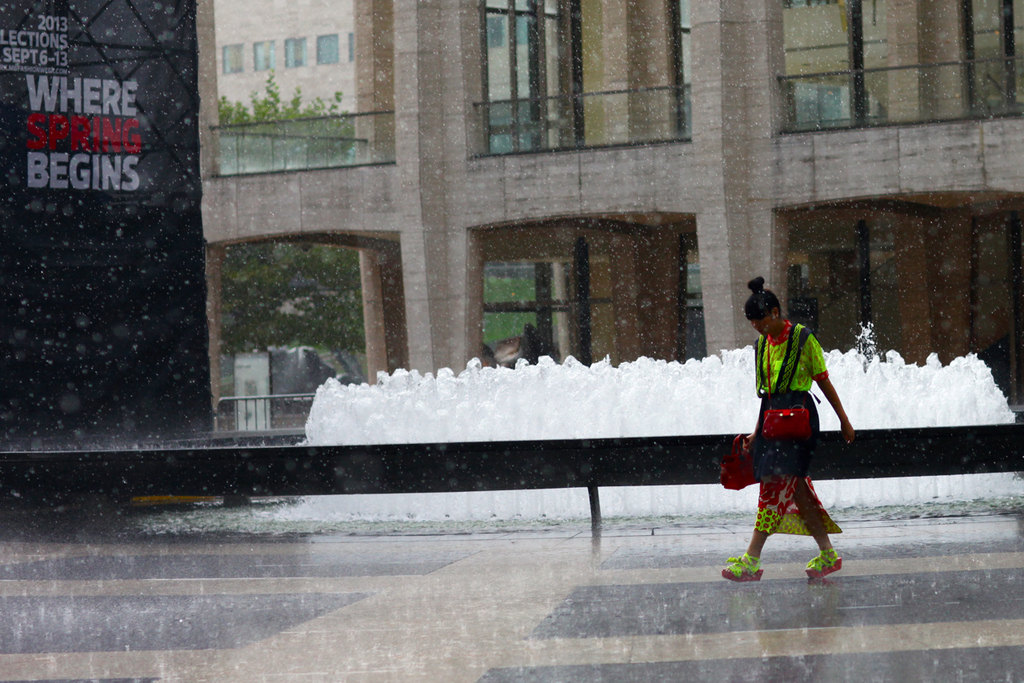
Then again, who am I? It's funny that these are really influential and powerful people in fashion and publishing and to think that even my opinion matters is kind of funny. Who the fuck am I? I just started this stupid blog and my opinion matters to somebody. That concept makes me feel uncomfortable, but it's also kind of amusing.
I haven't really thought about the future for the past few years because I have always been aware that this sort of success, for lack of a better word, has come so quickly, that it could all just disappear so quickly. I'm waiting for the bubble to burst, so I've always just been thinking about the present.
I've started shooting stuff for brands. I've been doing stuff for Saks Fifth Avenue. I did a handbag story where you pick 12 handbags and you style it, and we shot it around the city. It was cool because I get to have a lot of say in how it looks and where we shoot; I was talking to the team there, and they were saying it performed really, really well sales-wise.
I do a lot of stuff for like GStar or Furla. I just did a shoot for Zara a couple of weeks ago. These are happening more regularly. I was just in L.A. the other day — I was at the mall and I passed by so many shop windows that were using street style–looking photos for advertising. I passed by H&M and it was three street-style photos of like Joan Smalls and Liu Wen and Constance Jablonski or something.
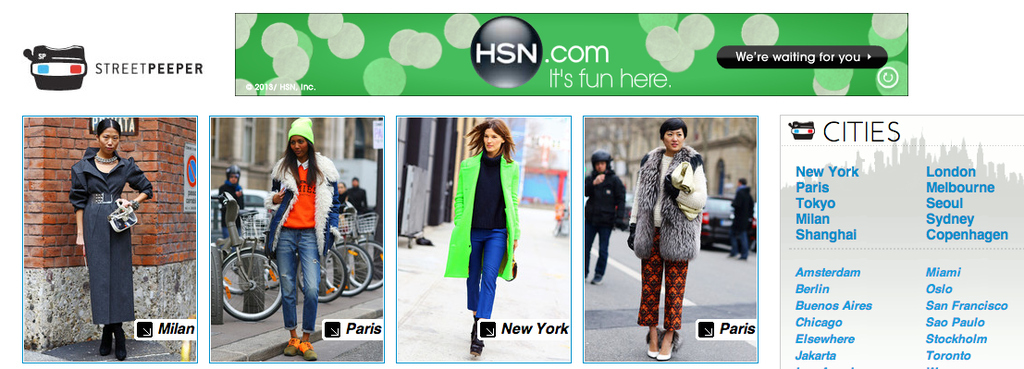
If people want to be street-style photographers? I'd say find something else to do, shit. We don't need any more! [Laughs.] But the way that street style started, actually on the street with non-industry people — there aren't as many people doing that anymore because the scene at fashion week has become so publicized. But I think it'd be really good to hone your own personal eye just doing that in your hometown. Somewhere like Silver Lake or Shoreditch — just really develop what inspires you to take a photo. Something that has helped me over the years is I had so much practice when it wasn't a mob scene to see what I liked and become more comfortable with my camera.
Be respectful of other photographers too. I know Bill Cunningham came before me and Scott [Schuman] came before me, so when I see them taking a photo I know to be respectful of that. Let them do their thing. One would hope these new photographers would offer that same respect. But it's a lot to ask for.
—As told to Amy Odell.
